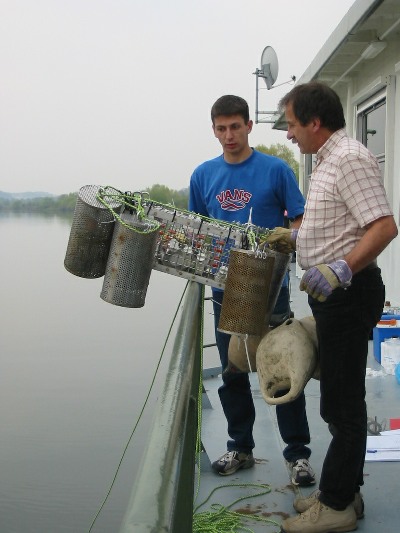How can aquatic pollutants be measured cost effectively over time?
The challenge
Taking samples of river water using the conventional method of filling bottles by hand can be costly and time consuming. Results obtained from ‘spot’ samples provide, at best, only a snapshot of pollutants that may have been present at the time of sampling, making interpretation of results problematic. Time lags between sampling, analysis and re-sampling also introduce delays that preclude timely response. Improved water quality sampling instrumentation is essential if these multiple problems are to be overcome for regulators and the water industry.
The solution
Chemcatcher® is a passive sampling device developed by researchers at the University of Portsmouth, and Chalmers University of Technology in Sweden. It measures time weighted averaged (TWA) concentrations of polar (e.g. pharmaceuticals and personal care products), and non-polar pollutants (e.g. polyaromatic hydrocarbons and some pesticides), heavy metals (e.g. cadmium, copper, lead and zinc) and some radionuclides (e.g. caesium-137) in water. It is also used in semi-quantitative mode for investigative monitoring, for example for the detection of sources of pollution in a catchment.

Chemcatcher® before deployment
Chemcatcher® can be deployed in-situ over extended periods of time (typically days to months) following which the samplers are retrieved from the field and the contaminants accumulated in the receiving phase are eluted and their concentrations measured using conventional analytical instrumentation.
A collaboration with South West Water, Natural Resources Wales and the Westcountry Rivers Trust led to the first riverine trials of Chemcatcher® for monitoring acid herbicides. Devices were deployed over a 25-mile stretch of the River Exe in May 2013 timed to coincide with known agricultural application of these herbicides. The River Lowman was identified as a previously unknown major source of these pollutants; a second field trial was carried out to identify other potentially problematic sub-catchments.
Resulting benefits
The Chemcatcher® sampler is being used internationally by researchers and commercial end users to provide cost-effective measurements of the concentration of pollutants in water over time.
“We are really pleased with the results obtained from the River Exe trial so far,” said Lewis Jones of South West Water. “The deployment of passive samplers in a catchment – and the ability to focus down to sub-catchments and individual tributaries – will be crucial in both targeting our catchment management interventions and assessing the subsequent improvements in water quality.”
Future directions
Due to the success of this trial, further monitoring campaigns within the catchment are being planned using various configurations of the Chemcatcher. These will focus on other problematic pesticides (e.g. metaldehyde) and identifying pharmaceutical residues and personal care products.
Add Pingback






